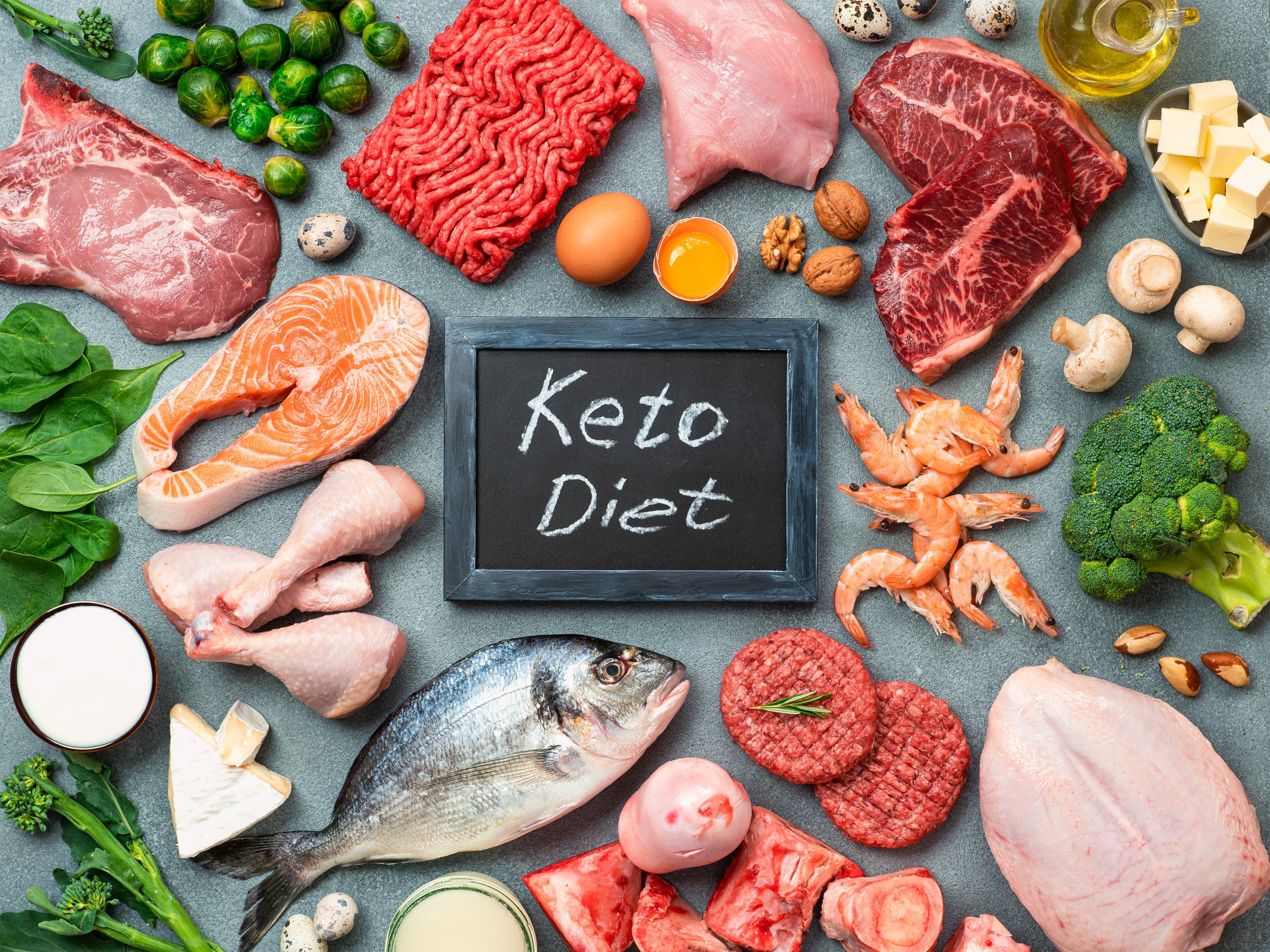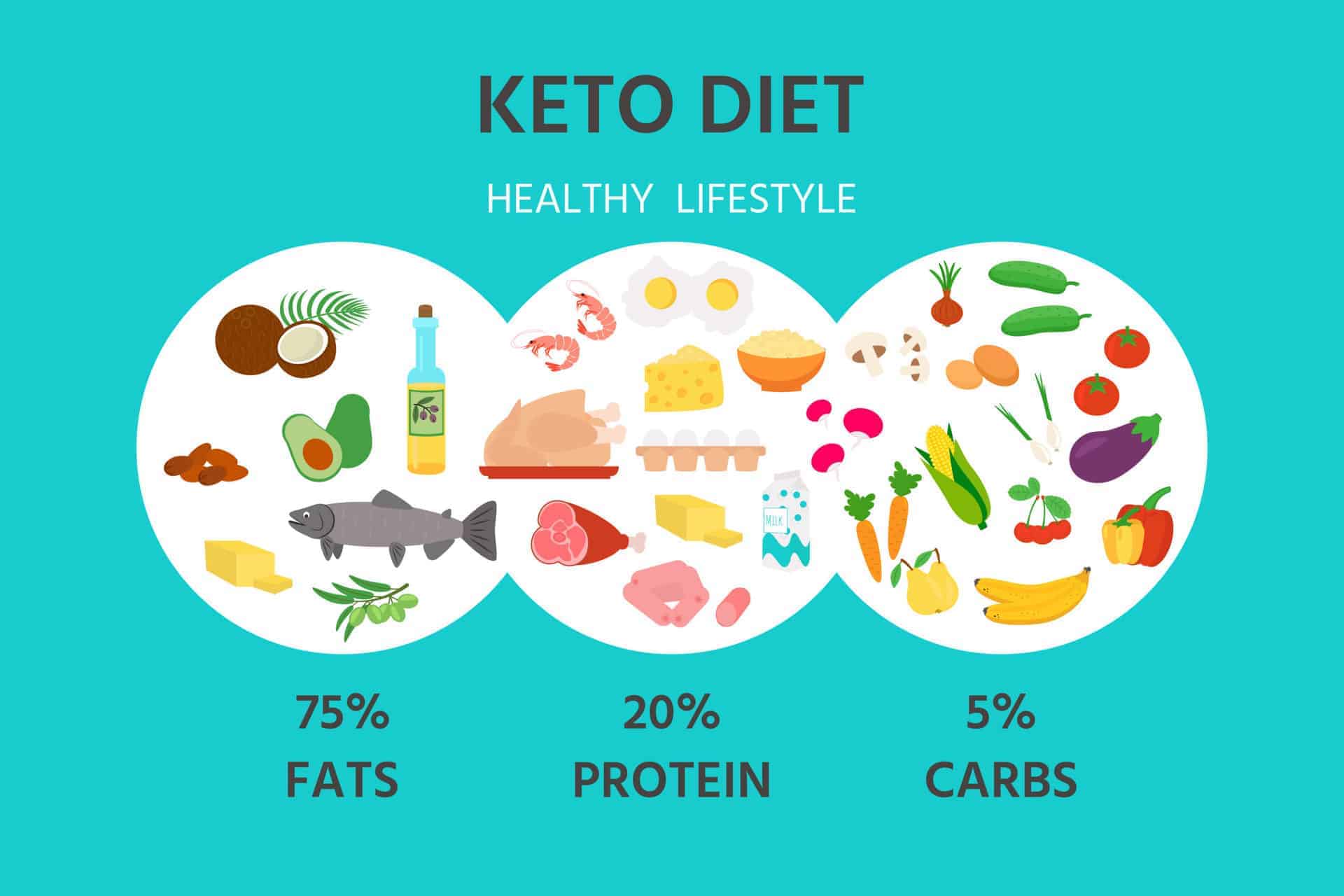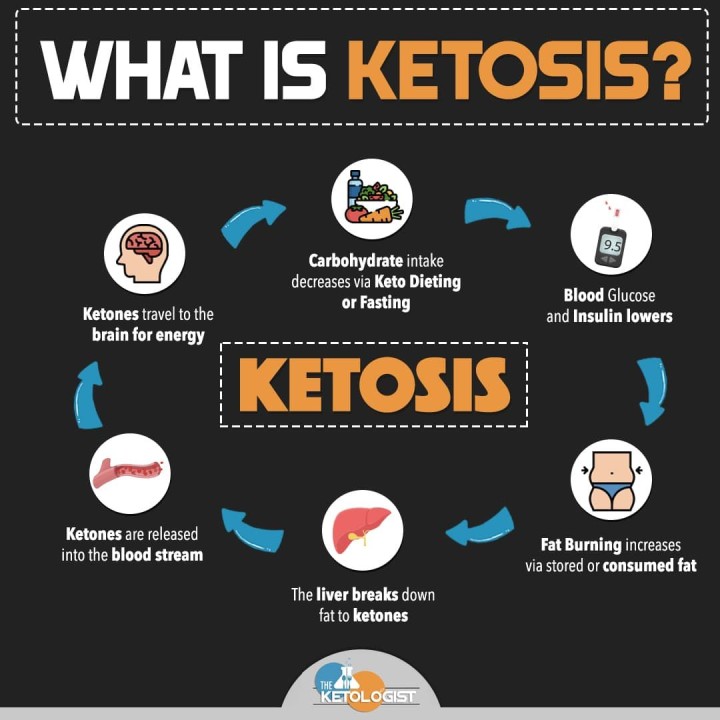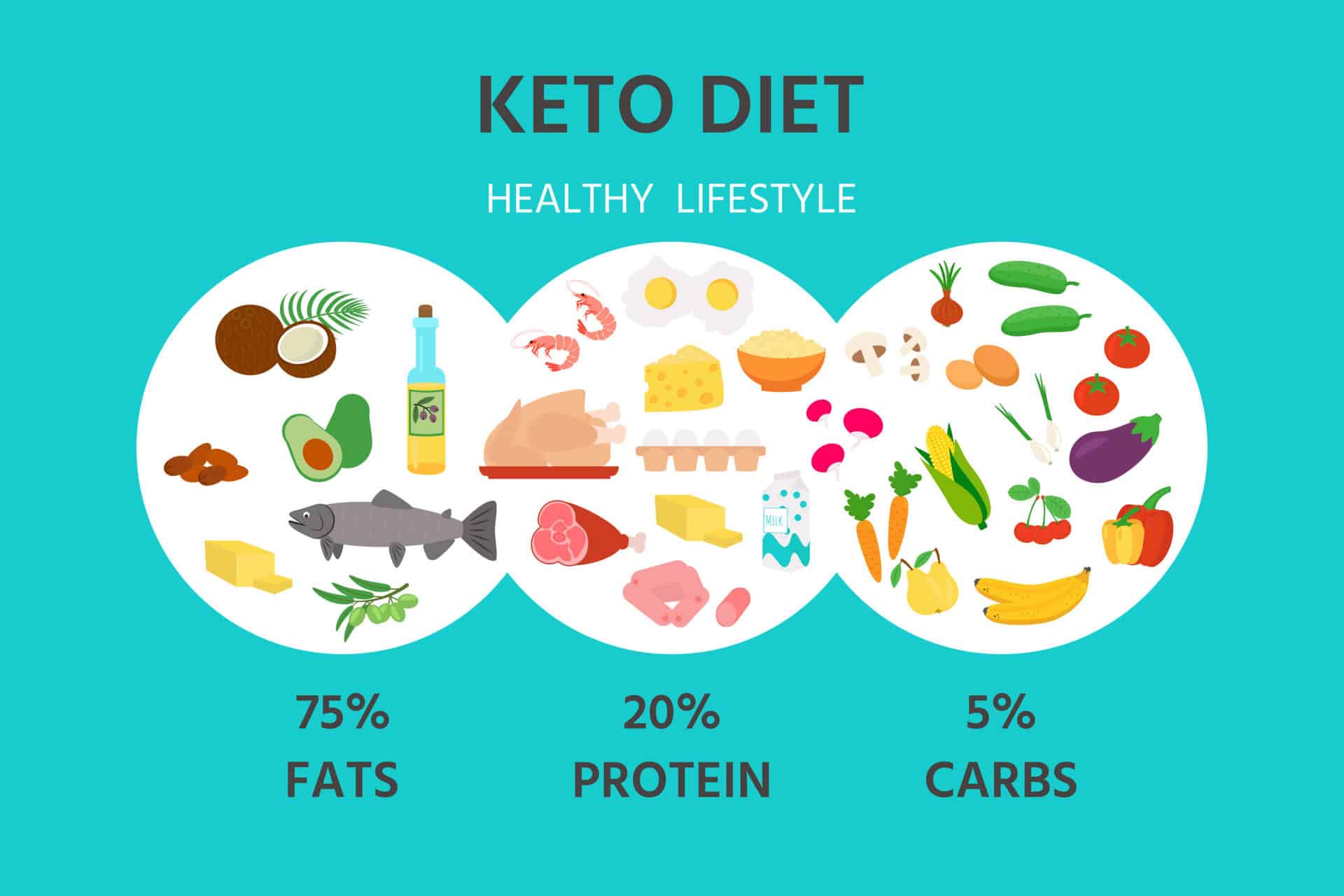
INTRODUCTION
In recent years, there are variety of diets that has been introduced to current society each with their own benefits, pros and cons towards body health. Ketogenic diet is a part of diet that has been practiced by most individuals. Ketogenic diet also known as keto diet is a type of diet that involves consumption of high amount of fat, moderate amount of protein and very few carbs. Keto diet recommended that 75% of calories come from fat, 20% from protein and 5% from carbohydrate sources. Mainly, keto diet restricts carbohydrate intake to less than 25 to 50 grams per day.

Some guidelines of food sources in keto diet:
HOW DOES KETO DIET WORKS?
In normal conditions, our body especially brain and nervous system use glucose (a form of sugar) that come from carbohydrate sources as their primary source of energy.

Keto diet on the other hand uses fat or ketones (acids produced in the liver) as the primary source of energy. By practicing keto diet, our body received low amount of glucose thus sugar is depleted and cannot be used as the main energy source. Hence, our body system changes the usual energy supply of sugar to fat as well as ketones. This phase is known as ketosis, in which body system depends on fat as well as ketones as its key power source.

BENEFITS OF KETOGENIC DIET
1. Treat difficult-to-control epilepsy in children
A study showed that children suffering from epilepsy who practice keto diet had reduced episode of seizures similar to those who were on medications. This decrease in seizures episodes is due to the brain utilizing ketone bodies as energy (Li & Heber, 2020).
2. Promoting weight loss
Another study showed that keto diet stimulates weight loss for short-term period by reducing the calories intake through higher consumption of fat and protein which aids to enhance satiety (Alharbi & Al-Sowayan, 2020).
3. Control blood glucose in patients with pre-diabetes and type 2 diabetes
Patients with pre-diabetes and diabetes who followed this diet for three months observed a change in their blood glucose through an improved Hba1c result (O’Neill & Raggi, 2020)
POTENTIAL RISKS AND SIDE EFFECTS OF KETOGENIC DIET
- Some study showed that there was a phenomenon known as Keto Flu which exhibit symptoms such as drowsiness, fatigue, nausea, poor breathing, poor concentration, indigestion, insomnia and depression. This phenomenon will last for a week causing the body to lose fat and experience drastic weight loss.
- Besides, keto diet lacks in fiber and some important nutrients such as calcium, magnesium, potassium, vitamin A and B.
- Also, keto diet enhances the process of ketosis that will use fat and elevate amount of ketones in the body. Continuous usage of ketones and its increase will cause blood to become acidic and harmful to the body.
- Furthermore, it can increase the level of LDL in the blood due to high intake of saturated fats in the diet.
KETOGENIC DIET IN LONG TERM
- By restricting macronutrients such as carbohydrates, protein or fat in long term, our body will experience craving that may lead us to give up the diet.
- After an individual decided to stop practicing keto diet and start eating normally, they will likely consume foods they were restricting before double the normal amount hence causing weight rebound or drastic increase of body weight.
- Moreover, by consuming higher fat content in keto diet, our body are no longer sensitive towards insulin due to the low amount of carbohydrate that normally stimulate insulin production for the conversion of glucose in the body. Thus, it is not suitable for diabetic patients especially for those who are on insulin injection due to high risk of hypoglycemic episode.
THE BOTTOM LINE
Keto diet generally works only for short-term period. Though it provides some benefits momentarily, we also need to consider the consequences that might happen after we stop practicing it. Diets that had restriction of certain macronutrients do not provide adequate and balance nutrients to our body thus will cause health problems and might prove hard to practice. Our body needs complete nutrients namely carbohydrate, protein, fat, vitamin, mineral and fibers to function efficiently. Therefore, diet consisting of balance, and adequate nutrients is more encouraged so that it can be practice consistently.
REFERENCES
Alharbi, A., & Al-Sowayan, N. S. (2020). The Effect of Ketogenic-Diet on Health. Food and Nutrition Sciences, 11(04), 301–313. https://doi.org/10.4236/fns.2020.114022
Li, Z., & Heber, D. (2020). Ketogenic Diets. JAMA – Journal of the American Medical Association, 323(4), 386. https://doi.org/10.1001/jama.2019.18408
O’Neill, B., & Raggi, P. (2020). The ketogenic diet: Pros and cons. Atherosclerosis, 292, 119–126. https://doi.org/10.1016/j.atherosclerosis.2019.11.021





